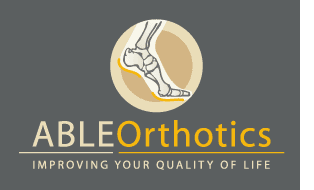When to Refer for Pedorthic Assessment
Posted by: ABLE Orthotics on April 28, 2010
At ABLE Orthotics, our focus is our patients, and we use our assessments to find the best solutions for each patient. Our breadth of treatment extends beyond “just orthotics”, including: education on footwear or foot care, simple stretching exercises, specialty footwear, footwear modifications, night splints, turf toe plates, custom toe spacers, compression stockings, etc. We work hard to gain your trust,and you can be confident that our focus is to do what is best for your patients.
Here are some general guidelines on when to refer to ABLE Orthotics, including some examples:
1. Pain of the foot, ankle, or lower limb due to abnormal biomechanics
- Common conditions: plantar fasciitis, metatarsalgia, patellofemoral knee pain
- Common abnormal mechanics: flat feet, high arches, abnormal pronation, excessive supination, dropped metatarsal arch, excessive or limited ranges of motion
2. Activity limitation or aversion secondary to mechanical issues
3. Deformity
- Bunion or hallux valgus, clawed toes, hammer toes
- Club foot
4. Post Trauma or Post Surgery
- Amputation of toes, or part of foot
- New pains due to change in foot or limb structure/function
5. Leg Length Discrepancy
- Structural limb length difference
- How much of a difference is significant to treat? We look at it case by case. In some cases 5 mm can be significant
6. Footwear fitting issues
- Extra depth, extra wide, extra narrow
- Seamless or stretchable uppers
- Deep toe box
7. Poor balance/unsteady gait patterns
- Elderly, stroke, cerebral palsy, neuropathic
8. High Risk Feet
- Insensitive feet – neuropathy, Raynaud’s
- Circulatory compromise
If you have questions as to when a referral is appropriate, please don’t hesitate to call and speak with us.

